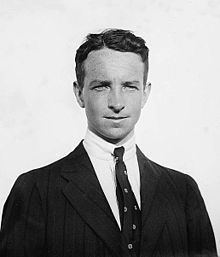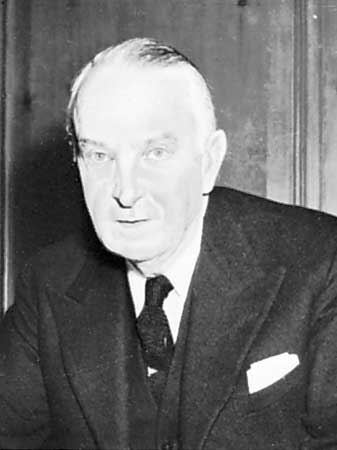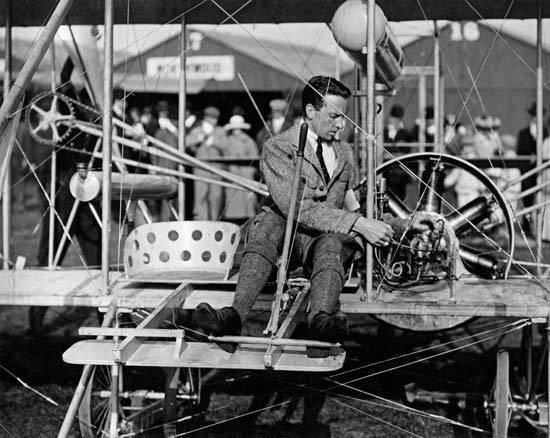Name Thomas Sopwith Spouse(s) Phyllis Brodie Sopwith | Years active 1910—1980 Children Tommy Sopwith Nationality United Kingdom Education Cottes School | |
 | ||
Full Name Thomas Octave Murdoch Sopwith Parent(s) Thomas Sopwith & Lydia Gertrude nee Messiter Died January 27, 1989, Hampshire, United Kingdom | ||
Aircraft designed Sopwith Bat Boat | ||
Thomas sopwith documentary 1984
Sir Thomas Octave Murdoch Sopwith, CBE, Hon FRAeS (18 January 1888 – 27 January 1989) was an English aviation pioneer and yachtsman.
Contents
- Thomas sopwith documentary 1984
- Sir thomas sopwith air power warning
- Early life
- Career in aviation
- Yachting
- References

Sir thomas sopwith air power warning
Early life

Sopwith was born in Kensington, London on 18 January 1888. He was the eighth child and only son of Thomas Sopwith (a civil engineer and managing director of the Spanish Lead Mines Company, Linares, Jaén, Spain) and his wife Lydia Gertrude née Messiter. He was educated at Cottesmore School in Hove and at Seafield Park engineering college in Hill Head.
When he was ten years old, whilst on a family holiday on the Isle of Lismore, near Oban in Scotland, a gun lying across young Thomas's knee went off, killing his father on 30 July 1898. This accident haunted Sopwith for the rest of his life.
Sopwith was interested in motor cycles, and took part in the 100-mile Tricar trial in 1904 where he was one of four medal winners. He also tried hot air ballooning, his first ascent being in C.S. Rolls' balloon in June 1906. Together with Phil Paddon he bought his own hot air balloon from Short Brothers. For a while he was in business with Phil Paddon selling automobiles as Paddon & Sopwith, Albemarle Street, Piccadilly, London.
In his youth, he was an expert ice skater and played in goal during Princes Ice Hockey Club's 1908 match with C. P. P. Paris and during the 1909–10 season. He was also a member of the Great Britain national ice hockey team that won the gold medal at the first ever European Championships in 1910.
Career in aviation
Sopwith became interested in flying after seeing John Moisant flying the first cross-Channel passenger flight. His first flight was with Gustave Blondeau in a Farman at Brooklands. He soon taught himself to fly on a Howard Wright Avis monoplane and took to the air on his own for the first time on 22 October 1910. He crashed after travelling about 300 yards (275 m), but soon improved, and on 22 November was awarded Royal Aero Club Aviation Certificate No. 31, flying a Howard Wright 1910 Biplane.
On 18 December 1910, Sopwith won a £4000 prize for the longest flight from England to the Continent in a British-built aeroplane, flying 169 miles (272 km) in 3 hours 40 minutes. He used the winnings to set up the Sopwith School of Flying at Brooklands.
In June 1912 Sopwith with Fred Sigrist and others set up the Sopwith Aviation Company, initially at Brooklands. On 24 October 1912 using a Wright Model B completely rebuilt by Sopwith and fitted with an ABC 40 hp engine, Harry Hawker took the British Michelin Endurance prize with a flight of 8h 23m. Sopwith Aviation got its first military aircraft order in November 1912, and in December moved to larger premisies in Kingston upon Thames. The company produced more than 18,000 British World War I aircraft for the allied forces, including 5747 of the Sopwith Camel single-seat fighter. Sopwith was awarded the CBE in 1918.
Bankrupted after the war by punitive anti-profiteering taxes, he re-entered the aviation business a few years later with a new firm named after his chief engineer and test pilot, Harry Hawker. Sopwith became chairman of the new firm, Hawker Aircraft.
After the nationalisation of the aviation interests of what was by then Hawker Siddeley, he continued to work as a consultant to the company until 1980.
He became a Knight Bachelor in 1953.
Sopwith's 100th birthday was marked by a flypast of military aircraft over his home. He died in Hampshire on 27 January 1989, aged 101. His grave and that of his second wife Phyllis Brodie (who he married after the death of his first wife, Beatrix Hore-Ruthven) can be found in the grounds of the 11th-century All Saints Church at Little Somborne near Winchester.
His authorised biography is Pure Luck by Alan Bramson, with a foreword by the Prince of Wales (ISBN 1-85260-263-5).
Sir Thomas was interviewed on 8 November 1978 by the art historian Anna Malinovska. The interview is reproduced in Voices in Flight, 2006.
He was a member of the Air Squadron.
His house in Mayfair, No. 46 Green Street, where he lived from 1934 until 1940, has a blue plaque. In 1940 he moved to Warfield Hall in Berkshire which he had acquired the previous year.
Yachting
Sopwith challenged the America's Cup with his J-class yachts, Endeavour, in 1934, and with Endeavour II in 1937. Both yachts were designed by Charles E. Nicholson. Sopwith funded, organised and helmed the yachts. He did not win the Cup but he became a Cup legend by nearly winning it in 1934. He was inducted into the America's Cup Hall of Fame in 1995.
In 1927 Sopwith commissioned yacht builders Camper and Nicholsons to build a luxury motor yacht he named Vita. She was sold in 1929 to Sir John Shelley-Rolls who renamed her Alastor. During World War II the Royal Navy commandeered her to ferry provisions to Navy vessels moored at the entrance to Strangford Lough. In 1946 a fire gutted her and she sank in Ringhaddy Sound at the back of Strangford Lough.
In 1937 Sopwith received the yacht Philante, also built for him by Camper and Nicholsons. During the Second World War the ship was requisitioned by the Royal Navy and used as a convoy escort vessel, HMS Philante. After the war the vessel was returned to Sopwith and he sold it to Norway in 1947, to be used as a royal yacht for the Norwegian king.
